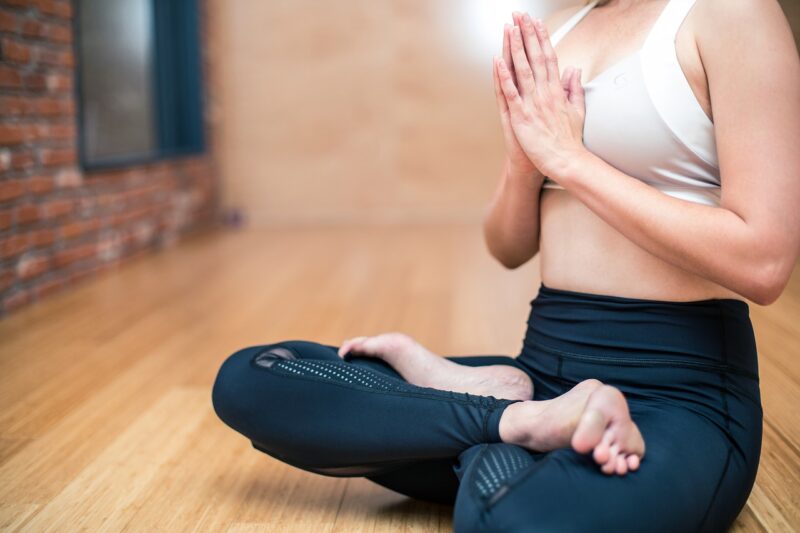
Yoga is not just a trendy fitness class—it’s a holistic practice that encompasses physical, mental, and spiritual well-being. One of the most sought-after benefits of yoga is its ability to enhance flexibility and strength. With its roots in ancient India, yoga has evolved into various styles, each offering unique advantages. In this article, we will explore the numerous benefits of practicing yoga, especially as it relates to improving flexibility and strength for individuals of all levels.
1. Understanding Flexibility and Strength in Yoga
Flexibility refers to the range of motion in your joints and muscles, allowing for greater mobility and reduced risk of injury. Strength, on the other hand, pertains to the ability of your muscles to exert force, supporting your physical activities and daily functions.
Yoga serves as a bridge between these two essential physical attributes, promoting overall fitness through its diverse postures (asanas) that challenge and develop both flexibility and strength.
2. The Science Behind Yoga’s Impact on Flexibility
Research supports the idea that regular yoga practice can significantly enhance flexibility. When you engage in yoga, various muscle groups are stretched and elongated, which helps to increase the elasticity of muscles and connective tissues. Here are some scientific insights into how yoga improves flexibility:
- Increased Blood Flow: Practicing yoga postures increases circulation in your body, delivering oxygen and nutrients to your muscles. This enhances muscle performance and recovery, allowing for greater flexibility over time.
- Awareness and Mindfulness: Yoga emphasizes breath control and mindfulness, encouraging practitioners to be in tune with their bodies. This heightened awareness can help individuals recognize and gradually push their flexibility limits safely.
- Gradual Stretching: Unlike some high-impact exercise routines, yoga promotes a slow and controlled approach to stretching. This allows the body to adapt to deeper stretches and prevents injury from overstretching or sudden movements.
By focusing on flexibility, yoga also helps alleviate tension and stress in the muscles, further contributing to a greater range of motion.
3. Building Strength through Yoga Practitioning
While flexibility is often emphasized, yoga is equally effective for building strength. By engaging multiple muscle groups while holding various poses, practitioners develop strength that is functional and balanced. Benefits of using yoga for strength training include:
- Core Engagement: Many yoga poses, such as Plank or Boat Pose, require the engagement of core muscles. This strengthens the abdominal and back muscles, leading to improved posture and stability.
- Muscle Control and Endurance: Holding poses for extended periods requires endurance. This leads to increased muscle control and stability as you learn to maintain balance in various positions.
- Resilience Against Injuries: Strengthening the muscles, especially around joints, can help protect against injuries in daily life and during physical activities. Stronger muscles contribute to better body mechanics and reduce the risk of strains and sprains.
Yoga teaches practitioners to use their body weight as resistance, making it an effective way to build strength without the need for weights or machines.
4. Different Yoga Styles to Consider
With various styles of yoga available, each offering unique elements to enhance flexibility and strength, here are some popular ones to consider:
- Hatha Yoga: A gentle introduction to yoga, ideal for beginners looking to improve flexibility and strength through basic poses and alignment techniques.
- Vinyasa Yoga: A dynamic flowing sequence of poses that build strength and flexibility simultaneously while focusing on breath.
- Ashtanga Yoga: A rigorous style that follows a specific sequence of postures performed in a continuous flow, perfect for those seeking a challenge that significantly improves strength and flexibility.
- Power Yoga: An athletic form of Vinyasa that emphasizes strength and endurance, incorporating challenging poses that engage the core and entire body.
- Yin Yoga: Focused on deep stretching and releasing muscle tension, Yin yoga is effective for improving flexibility by targeting the connective tissues and fascia that surround muscles.
Choosing the right style based on your personal goals can help you maximize the benefits of yoga for flexibility and strength.
5. Practical Tips for Getting Started
If you are new to yoga and want to incorporate it into your routine for flexibility and strength, consider the following tips:
- Start Slow: If you’re a beginner, choose foundational classes or beginner tutorials to get accustomed to basic postures and practice regularity.
- Listen to Your Body: Be aware of your body’s limits and avoid pushing yourself into discomfort. Progress takes time and consistency is key.
- Focus on Breathing: In yoga, breath control is essential. Pay attention to your breath as you hold poses or move through transitions to enhance practice performance and mindfulness.
- Incorporate Props: Don’t hesitate to use yoga props such as blocks, straps, or bolsters to enhance your practice and support your body during stretches.
Creating a regular practice—whether at home or in class—can lead to gradual improvements in both flexibility and strength.
6. Conclusion: Embrace the Journey of Strength and Flexibility
Practicing yoga provides invaluable benefits, especially in enhancing flexibility and strength. As you embark on this journey, remember to be patient and consistent. Each session is a new opportunity to learn about your body and its capabilities. With dedication, you will unlock greater body awareness, muscle tone, and a sense of balance and calm, allowing you to embrace both the physical and mental aspects of yoga.
So whether you are drawn to yoga for relaxation, strength building, or flexibility enhancement, know that it is a practice that harnesses the potential for transformative change within you, both on and off the mat.







